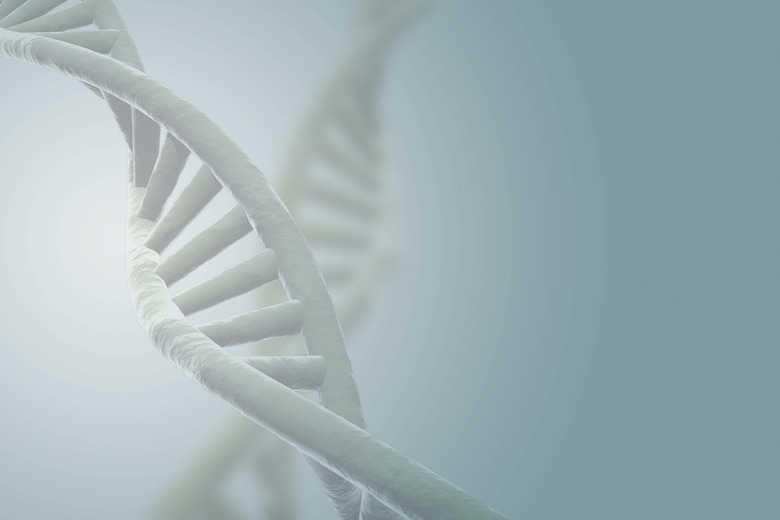List The Kinds Of Information That Can Be Found By Knowing The Sequence Of A DNA Molecule
A cell's nucleus can be thought of as the master control room of a factory, and the DNA is similar to the factory manager. The DNA helix controls every aspect of cellular life, and we didn't even know its structure until the 1950s. Ever since that discovery, the fields of genetics, molecular biology and biochemistry have rapidly expanded, and now simply knowing the sequence of a chromosome provides a wealth of information about the inner workings of the cell.
Every Possible Gene in the Sequence
Every Possible Gene in the Sequence
Scientific research has determined that every three DNA base pairs — called a codon — encodes for an amino acid in the eventual protein. One of the key pieces of information gleaned from the code is that every gene starts with an adenine-thymine-guanine codon — ATG on the DNA sequence. Because DNA is double-stranded, every CAT — or cytosine-adenine-thymine — found in the sequence is the beginning of a gene on the opposite strand. In addition, all genes end with TAA, TAG, or TGA codons. In other words, a quick examination of the sequence will reveal every possible location for a gene, although some short sequences are not actively transcribed by the organism.
Messenger RNA Sequences
Messenger RNA Sequences
In addition, the genetic code allows us to translate possible genes directly into messenger RNA sequences. This information is important to research scientists utilizing a technique called RNA interference to block gene expression in target cells.
Protein Sequences
Protein Sequences
Most eukaryotic and some prokaryotic organisms process mRNA transcripts by splicing, or removing, portions of the sequence called introns. If an organism does not splice RNA, the DNA sequence can be directly translated into a protein sequence. Even for those organisms that do, splice sites are generally known, which means that the protein sequence can be guessed or determined experimentally.
Mutations
Mutations
If an organism's genome has already been mapped, an individual's DNA sequence can be analyzed for mutations — this concept is the basis for human genetic testing. Doctors can now determine with reasonable accuracy a person's vulnerability to diseases caused by DNA mutations. For example, women with a family history of breast cancer can get checked for mutations in the BRCA genes, which would indicate a high risk for future breast cancer.
Restriction Sites
Restriction Sites
Most species of bacteria produce enzymes called restriction endonuclease — the cells are vulnerable to viruses that can insert harmful foreign DNA. Restriction enzymes combat the tactic by cleaving double-stranded DNA at specific sequences. Molecular biologists and microbiologists can use purified enzymes to cut DNA in the lab. Restriction digests are powerful tools at the disposal of research scientists, so if the DNA sequence is known, the restriction sites on that sequence are also known.
References
- National Cancer Institute: BRCA1 and BRCA2: Cancer Risk and Genetic Testing
- "Human Anatomy and Physiology"; Elaine N. Marieb; 2012
Cite This Article
MLA
Mullis, Robert. "List The Kinds Of Information That Can Be Found By Knowing The Sequence Of A DNA Molecule" sciencing.com, https://www.sciencing.com/list-kinds-information-can-found-knowing-sequence-dna-molecule-12946/. 24 April 2017.
APA
Mullis, Robert. (2017, April 24). List The Kinds Of Information That Can Be Found By Knowing The Sequence Of A DNA Molecule. sciencing.com. Retrieved from https://www.sciencing.com/list-kinds-information-can-found-knowing-sequence-dna-molecule-12946/
Chicago
Mullis, Robert. List The Kinds Of Information That Can Be Found By Knowing The Sequence Of A DNA Molecule last modified August 30, 2022. https://www.sciencing.com/list-kinds-information-can-found-knowing-sequence-dna-molecule-12946/
